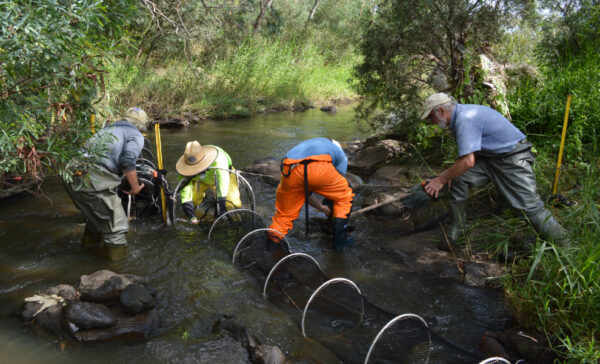By Charlotte Walkling
It’s an oft ill-used word frequently accompanied by an unnecessary modifier. But as the headline implies, Werribee River (Wirribi Yaluk) really is home to something … well … quite unique.
The platypus is already a unique animal, you’d have to agree, but the colony living in Werribee is thought to be the only one found in a central business district, making it very special indeed.
Unfortunately, while the platypuses of Werribee are ‘moderately healthy’, their already low numbers are declining, and the colony needs protection to survive.
Most of Melbourne’s waterways have been impacted by urbanisation and drying conditions due to climate change, which means the Werribee platypus is “under extreme threat” according to John Forrester, the Werribee River Keeper.
If Melbourne endures another long dry spell like the Millennium Drought of the early 2000s, Forrester fears the Werribee platypus will die out.
“You can see the future is pretty grim,” he says.
The Werribee River population is small but the paddle (official word for a group of platypuses!) has managed to survive there thanks to a ‘healthy’ riparian strip in Wyndham and human intervention, says Forrester.
“When they built the Werribee Park Mansion, they decided to put a ford across the river, so they could cross over to the western side of the Werribee River from the mansion.”
The ford became a pool of deeper, cooler water which has allowed the population to remain strong. “The young ones can travel further upstream as they try to move back up the river,” he says.
“So, strangely, mankind’s changes to the river I think have helped the platypus in Werribee by creating that pool and giving them plenty of water.”

Forrester has been the Werribee River Keeper since 2014 and is passionate about his role. He says that his job is to “speak up as the voice of the waterway”.
His dedication to protecting the environment stems from his childhood growing up in a country town surrounded by the sea and rivers.
“When I raised my family with my wife, I began to realise that my concern for [the natural habitat] is going to affect my kids even more.”
“I engaged my family in it by walks and talks out in the natural surrounds in the western plains of Melbourne … and I joined the River Association,” he says.
While people like John Forrester and the Werribee River Association continue to advocate for the protection of the river and the platypus, he says government bodies need to step in to create positive long-lasting change for the waterways.
The best way to protect the platypus is to improve the quality of the river through environmental flows and water sensitive urban design, says Forrester.
Water sensitive urban design is an urban planning approach that aims to reduce the harm of stormwater flowing through built up areas into the rivers. While aspects of water sensitive urban design have been slowly adopted over the last 25 years it isn’t sufficient, says Forrester.
It’s preventing large items from entering the river, but isn’t blocking smaller things like plastic particles which can stop the platypus from breathing.
The Werribee River Association with assistance from ecology firm Ecology Australia, conducts regular surveys of the local platypus paddle. The most recent survey trapped a total of three platypus, and one of the male juveniles had ‘looped litter’ entangled around its body. Loop litter is a leading cause of injury, disease and death in platypus, and highlights the importance of stopping looped items such as hair ties, rubber bands and bottle rings from entering waterways in the first place.
While human intervention on the river initially helped the platypus, it also disrupted the natural flow of the river, which now threatens the animals. Forrester says the river’s environmental flows need to be restored but government regulation prevents it from getting the portion of flow it’s supposed to receive.
“It’s a matter of managing the river like a natural or living entity and you need to do that through environmental flows.”
“There haven’t been enough funding for infrastructure … to get that water running down the river in a natural way.”
“We’ve got a precious population”, says Forrester. “And we’re looking after it, but our grandkids won’t see them if we don’t look after them.”

